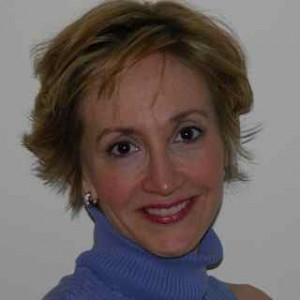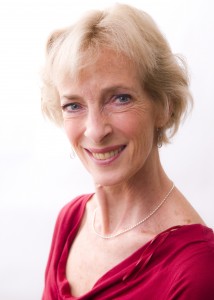Over the next two days we will feature two people on 4dancers–with 5 questions each. Risa Kaplowitz and Susan Jaffe worked together to found Princeton Dance & Theater Studio, so we thought we’d reach out to them both and talk about their experiences with teaching and dance. Part I features Risa Kaplowitz…tune in tomorrow for Part II with Susan Jaffe…

1. Can you tell readers a bit about how Princeton Dance & Theater
Studio came about and why you and Ms. Jaffe decided to collaborate together?
Susan and I were very good friends while studying at Maryland Youth Ballet (MYB). We fell out of touch during our individual careers, but at our ballet teacher, Tensia Fonseca’s 80th birthday party, we reconnected. Susan told some of us in confidence that she was going to be announcing her retirement soon. I had been working on a business plan for a studio in Princeton, and I probably had the first little idea at that party that maybe, just maybe, Susan would want to open it with me. My daughter was 4 at the time and I couldn’t find a local studio that offered what I wanted for her. I realized I wanted to open a place that had the essence—the great training plus the nurture—of MYB (which was the first training ground for many renowned ballet dancers including Julie Kent.)
During the reception of Susan’s final performance as Giselle at the Met, she put her arm around me and said, “Who knows, maybe one day you and I will open a school together.” That was all I needed to hear to be tenacious in getting everything in order so that she would finally say, “Okay, I’ll open it with you”.
2. Would you describe your philosophy when it comes to teaching ballet and how it was formed over time?
My teaching is probably most reflective of Maggie Black and Marjorie Mussman. While I definitely have certain elements of Mrs. Fonseca’s and Lupe Serrano’s (whom I had while at the School of PA Ballet) “fire-in-the-belly” type of passion in the classroom, Maggie and Marjorie were instrumental in helping me to understand the physicality of ballet. Everything in my career changed after I began studying with them in NYC, and I want my students to have that type of knowledge sooner rather than later.
Although I teach their philosophy, I’ve developed my own language and imagery to communicate the concepts I first received from them. I stress proper placement as the starting point of all work, which for me includes engaging the inner-thigh on the supporting leg and having an “inner” energy on the sides of the pelvis and an “outer” energy in the upper back. I call it the “Superman” look or suggest they think of it like a hydraulic—a force in on the sides of the hips, which comes out through the sides of the back like a fountain. This translates into a very strong and secure base while having a broad and expressive upper back without jutting the ribs out.
Maggie and Marjorie worked with many modern dancers as well as ballet dancers (in class with me at Maggie’s were such diverse dancers as ballet stars Martine Van Hamel, Kevin McKenzie, Robert Hill, Gary Christ, and Gelsey Kirkland to modern inventors such as Elisa Monte and Twyla Tharp’s company dancers). Maggie and Marjorie (who was ballet mistress/teacher for Mark Morris until her death last year) taught a very unaffected and grounded technique. It provided the necessary foundation for all styles of dance. I have modified this approach in my ballet classes to use more épaulement and port de bras focus than they did.
I have also been exposed to the ABT National Dance Curriculum, in which Susan became certified last year. I particularly like the port de bras co-ordination, and I will be going to their training sessions myself this summer. I’m certain that my ballet training philosophy will continue to evolve for the rest of my life, which is what makes teaching so interesting for me.

3. What has been the most satisfying aspect of this portion of your dance career?
Seeing all of our students become empowered through authentic ballet training is priceless to me. We have several students who did not have the facility to be ballet dancers who have gone on to get into the finest summer intensives, and several others who are in premier training companies, such as HBII. We are always told that our dancers stand out in auditions because of their clean, strong technique. While we’ll certainly rejoice loudly when one of our students gets a contract to a major company, we rejoice daily at the incremental advances any student makes.
4. What is your best advice for those who want to improve their teaching ability in the classroom?
My advice is to bring in master teachers, watch great dancers, and teach, teach, teach. One of the great perks of having Susan as a business partner has not only been having Susan in the studios but also the many guest teachers whom she has brought in over the years such as Cynthia Gregory, Desmond Richardson, Robert Hill, Martine Van Hamel, Irina Dvorovenko, Maxim Beloserkovsky, Sascha Radetsky, Ethan Stiefel, and Stephanie Saland. This week we had Julie Kent at our SI. The experience of watching these talents so closely has informed my teaching and so has going to see great ballet performances as much as possible. Susan and I were fortunate enough to have watched several Paris Opera Ballet school classes in their studios in France.
Ironically, I learn the most from my students. I feel their work viscerally, which is important for my understanding of each individual dancer. After so many years of teaching, just recently am I able to say, “Oh I remember feeling this way with a student or seeing this with so and so, and this is what worked for them.” There are so many individual issues, which either can be exasperated or minimized with the right training, that it is important to provide as many individual corrections as possible as opposed to blanket general correction. As with anything, the more a teacher experiences and teaches, the more she has to offer.
5. What is it like to work with Ms. Jaffe, and how would you describe her?
This is a hard question because it is like asking me to describe a member of my family. The lines between our work relationship and long-term friendship are too blurred to comment simply. What I can say is that Susan has bridged beautifully her life on the stage to her life in the studio as a teacher, choreographer and coach. She is extremely detailed in her teaching and coaching and has been an extraordinary role model to our students.
As you may have heard, she was recently named a ballet mistress at ABT—a position for which her experiences over the past seven years at PDT has helped prepare her. While she will not be at PDT as regularly as before, she will come to teach whenever possible. Our students are like our children, and she wants to keep working with PDT as much as possible. I’ll miss seeing her every week, but her presence will always be felt in the school we built.
BIO:
Risa Kaplowitz, a former principal ballerina with Dayton Ballet, drew critical acclaim for her portrayals of Giselle, Titania in Midsummer Night’s Dream, and Aurora in The Sleeping Beauty. Additionally, she was a member of Houston Ballet, Pennsylvania Ballet, Metropolitan Opera Ballet, and Manhattan Ballet.
Ms. Kaplowitz originally trained at Maryland Youth Ballet and went on to study with Maggie Black, Marjorie Mussman, Stuart Sebastian, Ben Stevenson, and Lupe Serrano. She has performed the repertoire of many choreographers including Fredrick Ashton, George Balanchine, Ben Stevenson, Stuart Sebastian, Dermot Burke, and Marjorie Mussman.
Ms. Kaplowitz first experienced the thrill of teaching ballet at the request of Josephine Schwartz, founder of Dayton Ballet. After her performing career, she became a regular teacher at Theater Dance Studio in NYC, assisted choreographers at The Julliard School and taught master classes for major dance conventions and competitions. After leaving the dance world for several years to grow a family and experience a “real world” business career as the New Jersey sales representative for Mikasa, Ms. Kaplowitz found her true calling when, in 2003, she co-founded Princeton Dance and Theater Studio (PDT) with former ABT ballerina, Susan Jaffe.
In addition to her duties at PDT, Ms. Kaplowitz is the Artistic director of DanceVision Inc. and founded D.A.N.C.E. (Dance As a Necessary Component of Education), an outreach program that brings dance to New Jersey schools. She has choreographed more than twenty works, and her choreography has been seen at New Jersey Symphony Orchestra’s Family Concerts at NJPAC. Ms. Kaplowitz’s original full-length ballet, The Secret Garden, based on the classic book by Francis Hodgson Burnett, premiered with DanceVision Youth Ensemble in 2008.






